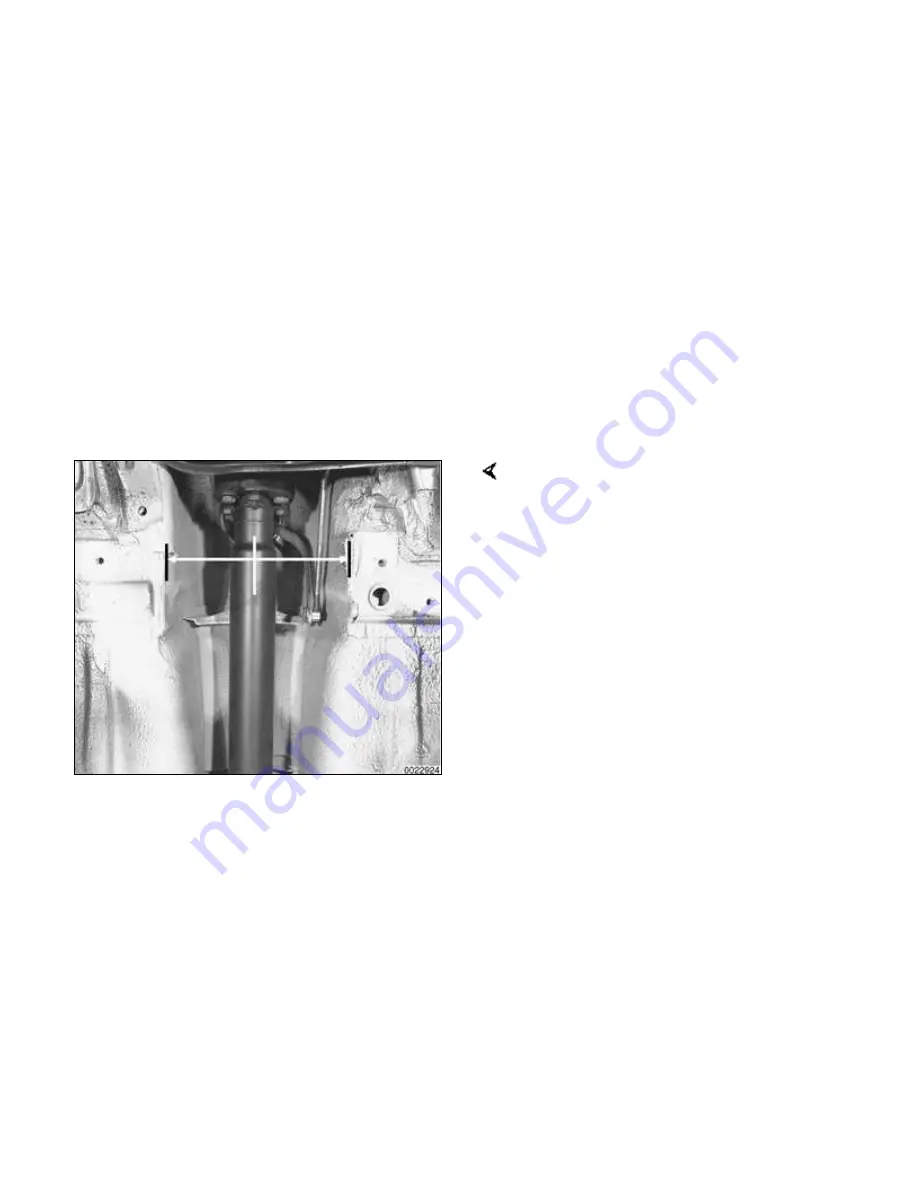
final drive have been removed and
installed. If all other parts of the
driveshaft have been inspected and
found to be okay, but there is still noise
or vibration, driveshaft alignment
should be checked.
There are two important driveshaft
alignment checks. The first is to make
sure that the driveshaft runs straight
from the transmission to the final drive,
without any variation from side-to-side
caused by misalignment of the
engine/transmission in its mounts.
Make a basic check by sighting along
the driveshaft from back to front. Any
misalignment should be apparent from
the center bearing forward.
To adjust the side-to-side alignment,
loosen transmission or engine mounts
to reposition them, then retighten
mounts. The driveshaft should be
exactly centered in driveshaft tunnel.
The second important driveshaft
alignment check is more complicated. It
checks the amount the driveshaft is
angled vertically at the joints. This
angle is known as driveshaft deflection.
In general, there should be little
deflection in the driveshaft between the
engine, the center bearing, and the
final drive. Precise checks require the
use of a large protractor or some other
means of measuring the angle of the
engine and the final drive and
comparing these angles to the angle of
the driveshaft sections.
To change the deflection angle, shims
can be placed between the center
bearing and the body or between the
transmission and its rear support.
When using shims to change a
deflection angle, keep in mind that the
angle of adjacent joints will also
change. Deflection angles should be
as small as possible.
Driveshafts
http://ebahn.bentleypublishers.com/BMW/3/E46/Repair%20Manuals/2...
2 of 11
2/25/2009 10:20 PM
















































